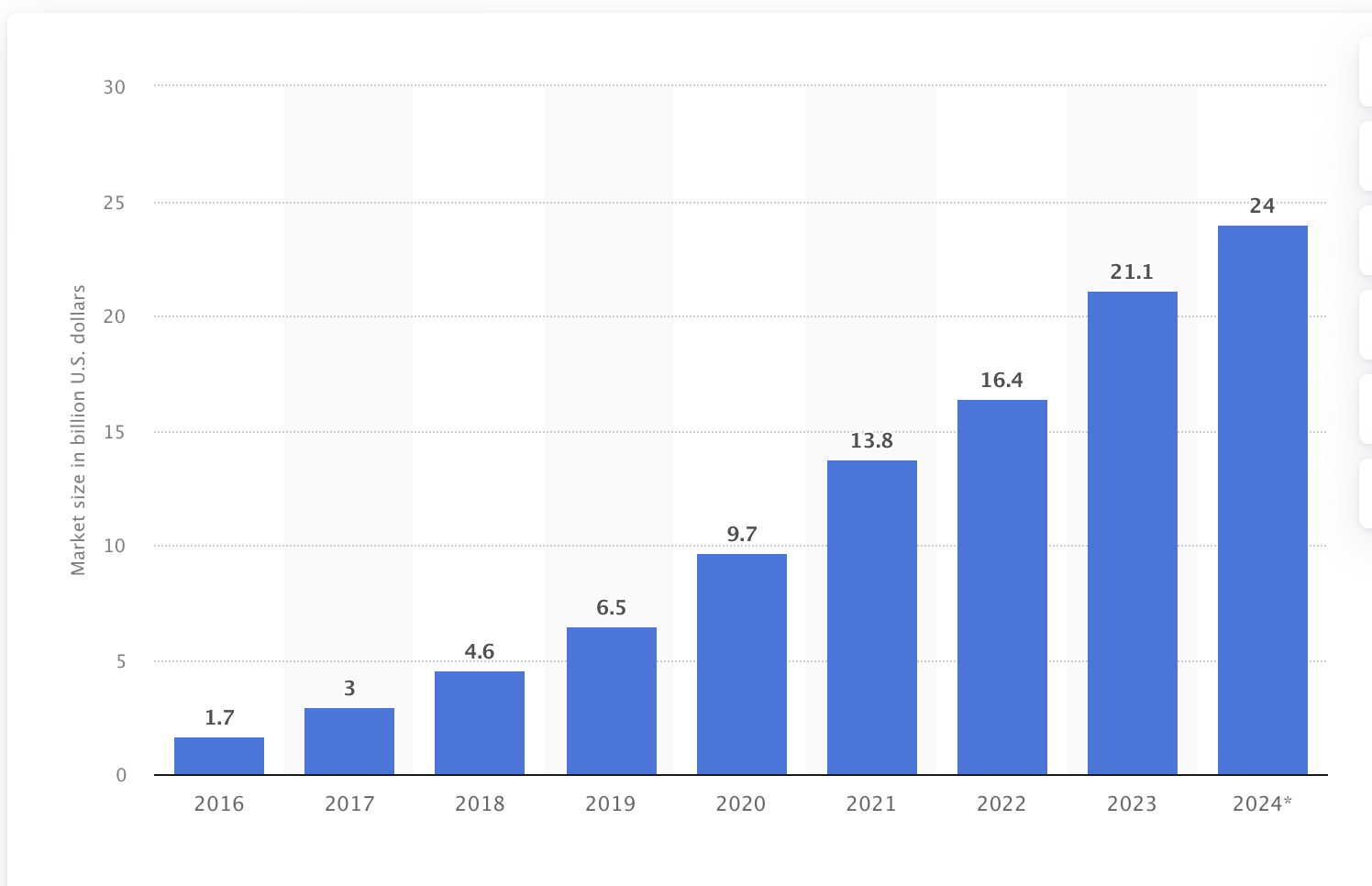
Credit: Statista
https://www.statista.com/statistics/1092819/global-influencer-market-size/
The segment of "Kidults" presents a valuable opportunity for the dolls and toys market, given their significant economic power and impulse-driven purchasing decisions. However, within the capitalist framework of today's market, brands must target diverse audiences to maximize their consumer base and get higher revenues. In an economic landscape characterised by wars, crises, and saturation, children emerge as an essential base due to their vulnerability, their future as consumers and their persistent desire to play (Bernardini, 2014). In addition, children can influence and determine their parents' purchasing decisions. At the same time, parents themselves may foster materialistic attitudes in children due to the communicative approach they use with them ( Vendana & Lenka, 2014).
In the past, the media has been used extensively by marketers to promote content to children, and today, with the development of the web, this practice has moved to social media platforms and influencers at a cost of at least $1 billion.(McNeal, 1999). However, on social media and YouTube, the distinction between ADV and organic content is more complicated due to the fully integrated nature of the advertising and the lack of transparency in the presentation (De Veirman et al., 2019). Children lack critical thinking skills and are unable to differentiate the value and quality of the product from the person who is promoting it, therefore they are persuaded and encouraged to purchase through ADV, which leads to materialistic behavior.

Materialism can be defined as a personality trait, an obsession, or an expression of possessiveness towards the material world. The typical traits of materialism include the idea that material objects are essential and determinant for a happy, healthy, and successful life, among which we can see envy, lack of generosity, and possessiveness ( Belk, 1984).
Children under the age of 12 are unable to identify the prejudices presented in the ad and when they do not get what they want, they become easily frustrated and show obvious signs of dissatisfaction and anger. The frustration that results from not getting the product causes children to behave in selfish and antagonistic ways that will become more visible in the future (Lenka, 2014).
The brand itself, on its own Instagram and TikTok accounts, covertly persuades children to buy massively and collect its products, thus adopting a materialistic attitude.
For example, in a video that follows a popular trend on Instagram, which begins with the words:” We are” and goes on listing the characteristics that represent a particular social type, one of the protagonist dolls pronounces the phrase: “We are LOL Surprise Dolls, of course, you can't have just one of us you gotta have us all.”
In this way, the brand ensures that it keeps up with popular and emerging trends on the platform, but at the same time, it covertly encourages excessive consumption by children who lack media literacy skills and the moral and critical development to interpret these messages.
Reel Published from the Official Instagram Account of LOL Surprise on March 20th, 2024 "We are LOL Surprise Dolls" https://www.instagram.com/reel/C4ttFLDvJJQ/?igsh=MWlodnprandxaG9nYQ%3D%3D